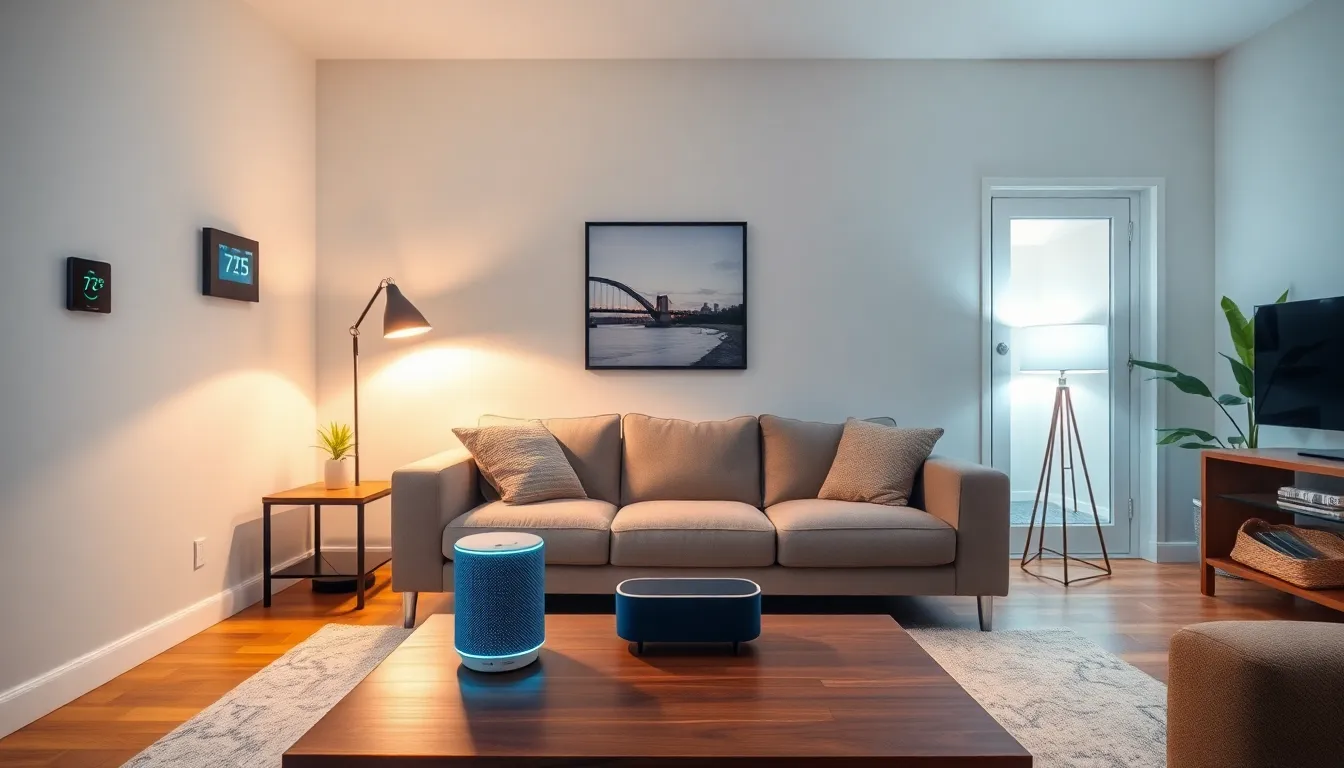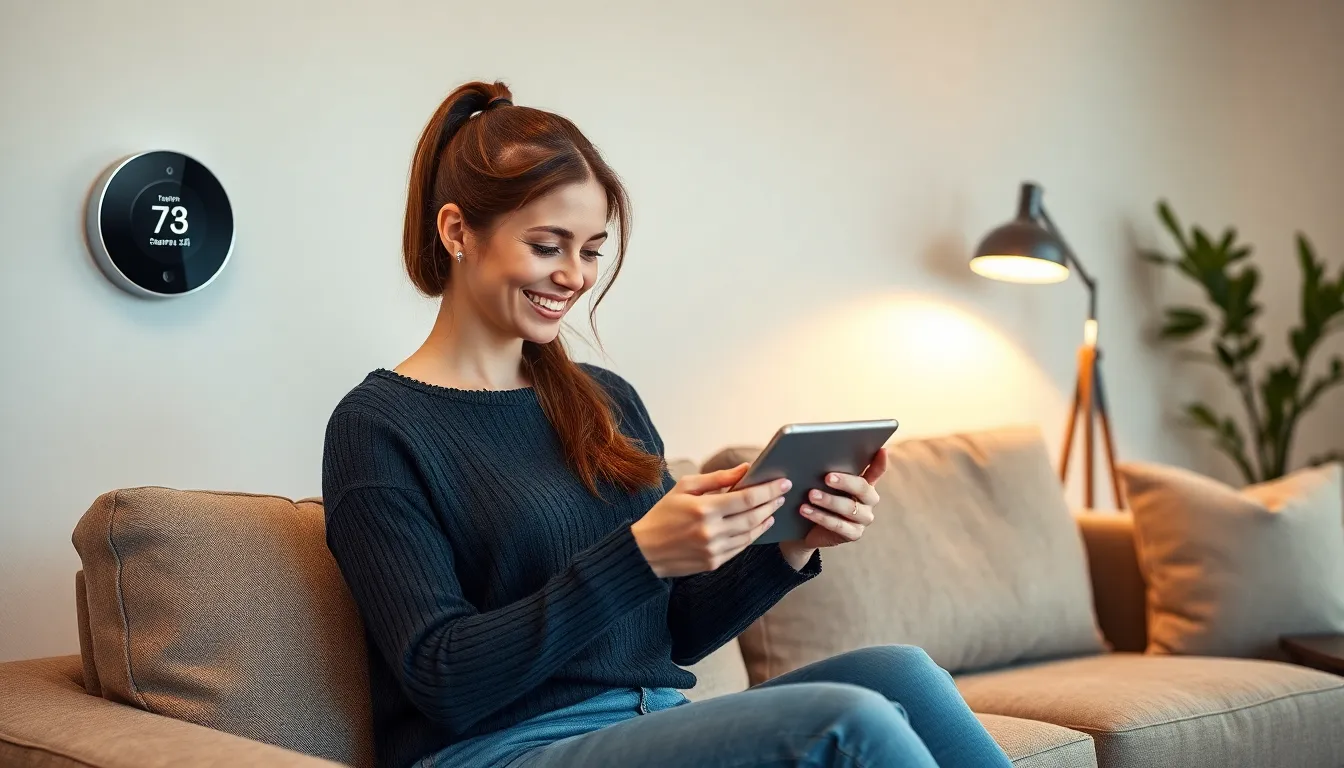Table of Contents
ToggleImagine waking up to the gentle hum of your coffee maker brewing your favorite blend while the lights gradually brighten to mimic a sunrise. Welcome to the Smart Home Revolution, where technology meets convenience in a way that feels almost magical. Gone are the days of fumbling with light switches or wondering if you left the oven on. Now, everything from your thermostat to your security system can be controlled with just a tap or a voice command.
As homes become smarter, they also become more efficient, secure, and downright fun. Think of it as your home getting a brain upgrade—one that knows your preferences and adapts to your lifestyle. So, whether you’re a tech enthusiast or just someone who wants to make life a little easier, the Smart Home Revolution is here to transform the way you live. Get ready to embrace a future where your home does the heavy lifting, leaving you free to enjoy life’s little pleasures.
Overview of Smart Home Revolution
The Smart Home Revolution represents a significant shift towards integrating technology into everyday living. Smart devices enhance convenience, improve efficiency, and adapt to individual needs.
Definition of Smart Homes
Smart homes use internet-connected devices to automate and control household functions. These functions include lighting, security, heating, and entertainment systems. Homeowners interact with smart devices via smartphones, tablets, or voice-activated assistants. Such personalization allows inhabitants to create tailored environments, enhancing both comfort and security. With smart technology, routines become more efficient, making it easier to manage daily tasks.
Key Technologies Involved
Various technologies drive the Smart Home Revolution. Internet of Things (IoT) devices enable communication between appliances and systems. Wireless communication protocols, such as Wi-Fi, Zigbee, and Z-Wave, allow seamless connections. Cloud computing stores and processes user data, resulting in smarter automation. Voice recognition technology powers virtual assistants, offering hands-free control of devices. Using artificial intelligence, smart homes learn user preferences and optimize energy consumption. These technologies collectively transform homes into adaptable and intuitive spaces.
Benefits of Smart Homes

Smart homes deliver numerous advantages, enhancing lifestyles through technology. Convenience and automation stand out as key benefits, along with energy efficiency and cost savings that often follow.
Convenience and Automation
Smart home devices improve daily routines by automating tasks. Homeowners use smart speakers to control lighting and temperature, simplifying adjustments via voice commands. Smart appliances operate on schedules, ensuring the coffee brews before waking up. Home security systems monitor properties and send alerts about unusual activities. Personalized settings create tailored environments that match individual preferences, fostering comfort.
Energy Efficiency and Cost Savings
Smart homes significantly reduce energy consumption. Smart thermostats learn schedules and optimize heating or cooling based on occupancy. Homeowners can track and limit energy usage through comprehensive apps, identifying high-consumption devices. LED lighting, integrated with smart controls, lowers electricity bills while maintaining brightness. Overall, the integration of smart technology not only saves money but also promotes environmental sustainability through reduced energy waste.
Challenges in the Smart Home Market
Navigating the smart home market presents unique challenges that impact consumers and manufacturers alike.
Security Concerns
Smart homes raise significant security concerns for users. Many devices collect sensitive data, which hackers may target. Unauthorized access to a smart home system can lead to privacy violations and potential safety risks. Manufacturers also face scrutiny over their data protection measures. Weak encryption protocols or unpatched vulnerabilities can leave systems open to attack. As a result, consumers often hesitate to adopt smart devices without assurances of robust security features. Companies must prioritize implementing stringent security protocols and providing regular updates to build trust with users.
Compatibility Issues
Compatibility issues pose another substantial challenge in the smart home ecosystem. Various brands and devices often use different communication protocols, complicating seamless integration. Homeowners frequently encounter difficulties when trying to interconnect devices from multiple manufacturers. Some devices may not support specific platforms or operating systems, leading to frustration. As smart home setups expand, interoperability becomes vital. Standardization efforts among manufacturers can ease these compatibility problems and enhance the overall user experience. Establishing universal standards may encourage increased adoption of smart technology in households.
Future Trends in Smart Home Technology
Innovations in smart home technology continually reshape how people interact with their living spaces. The integration of artificial intelligence and the Internet of Things plays a crucial role in this progression.
Integration with AI and IoT
Artificial intelligence enhances the functionality of smart home devices. These devices learn user preferences over time, adjusting automatically to fit individual routines. IoT facilitates seamless communication among connected gadgets, creating a more cohesive environment. Voice-activated assistants become more intuitive, making commands simpler and faster. Predictive analytics further improves energy management by anticipating peak usage times. Homeowners benefit from a personalized experience that optimizes efficiency and comfort.
Growth of Smart Appliances
Smart appliances are gaining traction as more consumers seek convenience. Refrigerators with built-in cameras allow users to check inventory remotely and plan meals efficiently. Washing machines can be initiated through a smartphone app, offering flexibility for busy schedules. Rapid advancements in smart oven technology enable users to cook remotely or receive notifications when food is ready. The demand for these connected devices is rising, pushing manufacturers to innovate further. Enhanced functionality leads to a more integrated home experience that appeals to a broader audience.
The Smart Home Revolution is transforming how individuals interact with their living spaces. With advancements in technology homeowners can enjoy increased convenience and efficiency. As smart devices become more integrated and intuitive the potential for personalized living experiences continues to grow.
Addressing security and compatibility challenges will be crucial for widespread adoption. As manufacturers work towards standardization and enhanced data protection features consumers will feel more confident embracing smart technology. The future promises even more innovative solutions that will redefine everyday life making homes not just smarter but also safer and more sustainable.





